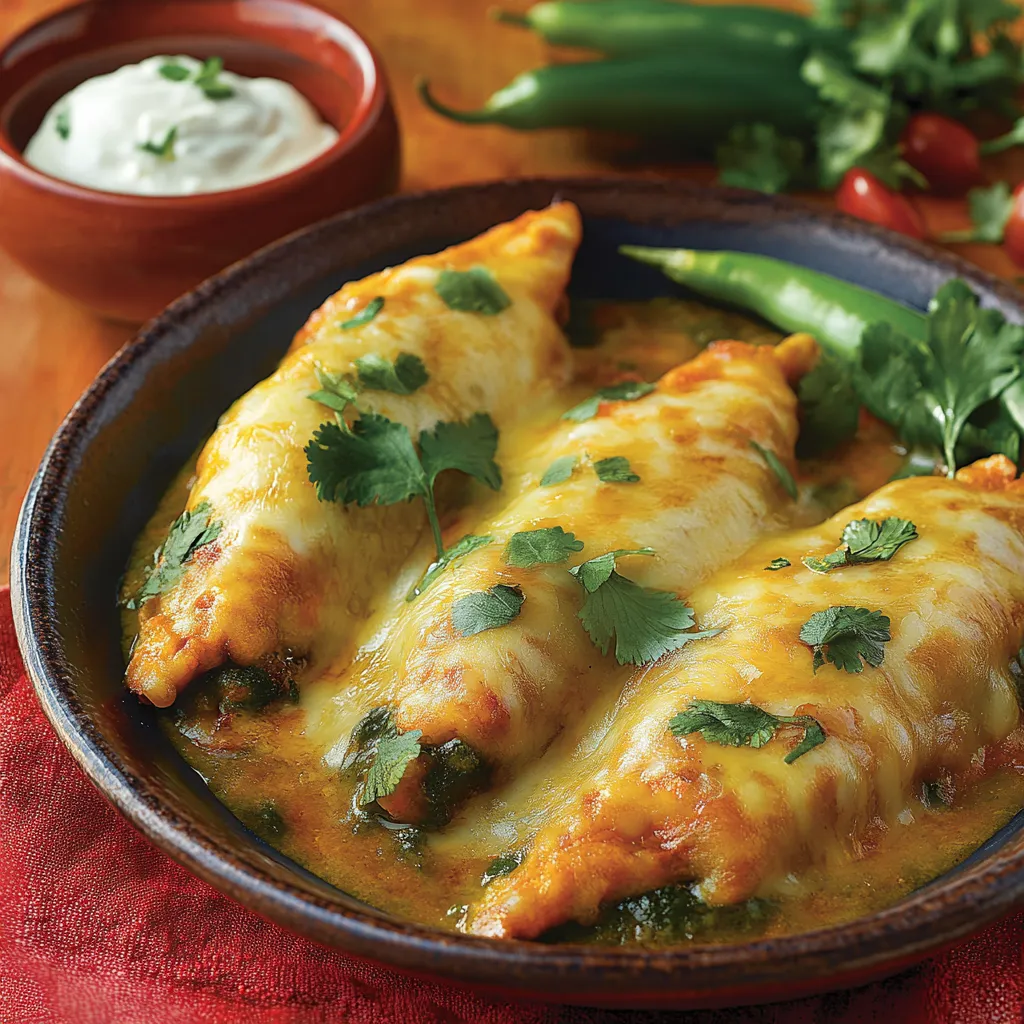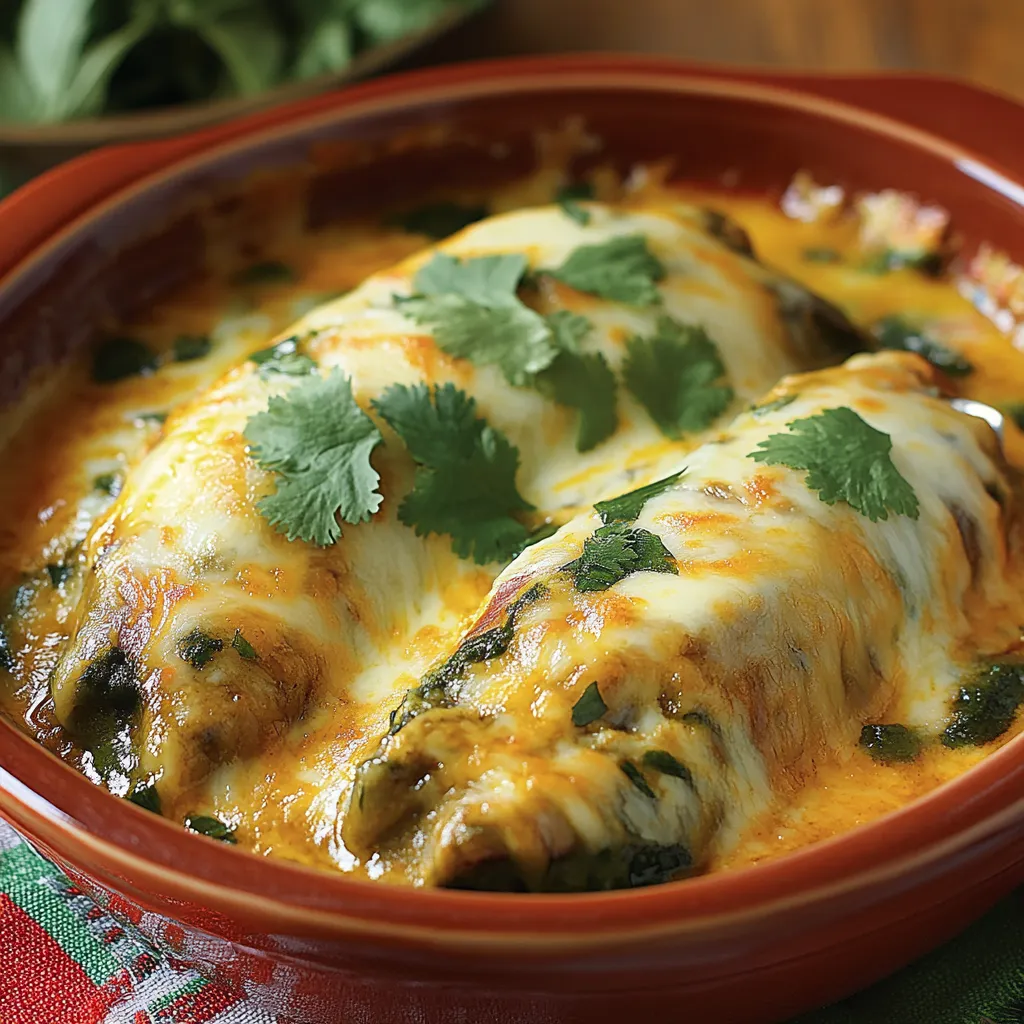 Pin it
Pin it
This punchy, real-deal chimichurri brings South American zip straight to your dinner table. It turns ordinary grilled meats into something special with its fresh herb kick, punchy garlic notes, and gentle warmth that's been making backyard cookouts in Uruguay and Argentina amazing for years.
I whipped up this chimichurri for an Argentine-style BBQ I hosted, and everyone was scraping the bowl for the last bits. These days I always keep some in my fridge because it makes even basic grilled chicken taste fancy.
What You'll Need
- Parsley: Chopped fine, it's the backbone that gives the authentic taste
- Red wine vinegar: Adds tang that works against the richness of oil and meat
- Olive oil: Makes everything smooth and carries the flavor
- Garlic: Chopped small, brings big flavor - don't use the pre-chopped stuff
- Red chilies: Seeds removed and cut tiny, they add just enough kick
- Dried oregano: Brings a rustic touch that works with the fresh parsley
- Chunky salt: Brings out all the other flavors - sea salt works great
- Black pepper: Freshly ground adds a nice background warmth
Making Your Sauce
- Get Everything Ready:
- Chop your parsley with a good knife for clean cuts instead of using a blender which can damage the herbs. Mince your garlic really small but not mushy. Take out all the seeds from your chilies before chopping them tiny so you can control how spicy it gets.
- Mix Your Liquids:
- In a bowl, pour your oil and vinegar. Getting this balance right matters for the real flavor, with oil being the main part. Give it a quick whisk so everything will mix better later.
- Toss In The Flavor Makers:
- Drop in your chopped parsley, tiny garlic bits, and chilies into your oil mix. Make sure everything's cut super small to let out all their flavors. Sprinkle your oregano, chunky salt, and fresh pepper on top.
- Let It Sit:
- Mix everything well so it's all evenly spread out. Let it hang out for 5-10 minutes at room temp without touching it. This waiting part really matters - it lets all the flavors get friendly with each other. For even tastier results, stick it in the fridge for a couple hours before you eat.
 Pin it
Pin it
What I love most about this chimichurri is how the chili heat sneaks up on you as you eat. My friend from Argentina taught me this recipe and wouldn't let me use a food processor. He made me chop everything by hand just like his grandma did, saying that knife-cutting releases the oils in a totally different way.
How To Serve It Right
Real South American grill experts don't use chimichurri to soak meat before cooking. They brush it on during the last few minutes on the grill, just enough to warm the herbs and wake up their smell. For the best way to enjoy it, put extra sauce in a small dish on the table so everyone can add as much as they want to their hot grilled meat. That mix of smoky, charred meat with bright, garlicky sauce is what makes South American BBQ so amazing.
Keeping It Fresh
This sauce tastes best within 24 hours if kept in a sealed container in your fridge. Though some people say it lasts longer, real Argentine chimichurri is all about freshness. After a day, the parsley starts looking dull and losing its zip. The garlic also gets stronger over time and can take over. It's better to make small batches more often than one big batch. If you need to keep it longer, leave out the garlic and add it fresh right before you eat.
Make It Your Own
What's great about chimichurri is you can tweak it to suit your taste while keeping it authentic. If you don't like it hot, use half the chilies or take out all the seeds. Heat fans can throw in more chilies or some red pepper flakes for extra kick. Some parts of Argentina mix in fresh oregano with the dried kind for more flavor layers. You might want to add more or less vinegar depending on what you're eating it with. Just remember that it gets stronger as it sits, so taste it after letting it rest and then adjust.
 Pin it
Pin it
This old-school sauce can turn any regular meal into a tasty South American feast in just minutes.
Frequently Asked Questions
- → What is the difference between Uruguayan and Argentinian chimichurri?
Though both nations claim this sauce as their own, they make it almost the same way. The only real difference is that folks in Uruguay sometimes add a splash of lemon juice along with the wine vinegar, while Argentinians often toss in extra oregano. Both versions are completely authentic and taste amazing.
- → How long does homemade chimichurri last?
Fresh-made sauce tastes best within 24 hours. But if you keep it in a sealed container in your fridge, it can actually stay good for 2-3 weeks, though the green herbs will darken and the flavors will get stronger as time passes.
- → Can I use dried herbs instead of fresh in chimichurri?
You need fresh parsley for real chimichurri since it gives the sauce its bright color and flavor. Dried oregano works fine, but dried parsley just won't create the same fresh, vibrant result that makes this sauce so special.
- → Is chimichurri spicy?
The classic version has a gentle to medium kick from fresh red chilies. You can easily make it hotter by adding more chilies or milder by taking out the seeds and membranes or just using less of them.
- → What can I serve with chimichurri besides grilled meats?
While it's fantastic with grilled beef and chicken, this sauce also tastes great on roasted veggies, fish, eggs, spread on sandwiches, mixed into soups, tossed with pasta, or used to marinate tofu. It even works as a yummy dressing when you mix it with leafy greens.
- → Can chimichurri be frozen?
Sure thing, it freezes really well. Just pour it into ice cube trays, freeze solid, then pop the cubes into a freezer bag. This way you can thaw just what you need. Your frozen sauce will stay tasty for up to 3 months.
